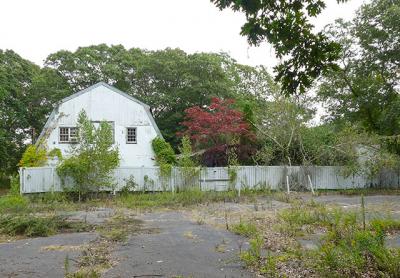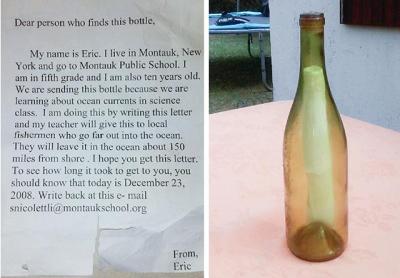A Better East Hampton?
A Better East Hampton?
The East Hampton Village Board took a long look into the future at its work session last Thursday, with agenda items that included affordable housing, accessory structures, and a dramatic re-imagining of the village as presented by two architects.
Maziar Behrooz and Bruce Engel, East Hampton architects, presented what they have previously called a “guerrilla plan” that they say would address environmental, transportation, and housing deficiencies while connecting existing and new hubs of activity, restoring the pedestrian and bicycle-friendly village of years past. The architects presented their “Vision for the Village of East Hampton” before an audience at the Parrish Art Museum in Water Mill on Aug. 31, and in a follow-up article in The Star, Mayor Paul F. Rickenbach Jr. called the plan “thought provoking and stimulating,” and suggested its authors present it at a work session.
Because the village had not commissioned them to create their vision, “it gave us opportunity to think freely and openly,” Mr. Behrooz told the board. But, he added, “We need feedback from you all, who know this town far better than we do. Should you feel that this is worth pursuing, we would be happy to be part of a committee . . . and see where it can go.”
After their presentation to the board, the mayor said that in conjunction with the town, the village had purchased property contiguous with Herrick Park. “That’s very important because it’s an extension of our green space,” in harmony with the architects’ plan. The board is aligned with the town in efforts to mitigate deteriorated water quality in its ponds, and both municipalities are considering wastewater management. “What you’ve offered us this morning gives us additional food for thought,” he said. “At least let this be a beginning of the dialogue.”
“We have to look into doing something,” said Bruce Siska, the deputy mayor, “because of the core center and all the cesspools and sewer systems in the Reutershan parking lot and the Schenck parking lot. We’re going to have to do something, and we’re looking at having more available housing in the core community, which is going to put a strain on the sewer system.”
Discussions of affordable housing and the use of accessory structures followed the presentation. Bill Chaleff, an architect who assisted Mr. Behrooz and Mr. Engel in their plan, said that “two-thirds of all the housing stock on the South Fork are second homes, and the year-round community is overwhelmed by this.” That figure, he said, is “very rapidly moving toward three-quarters.”
Barbara Borsack said that the presentation coincided with her thinking about the commercial district’s future. Retail stores across the country are dying, she said, victims to online shopping. “It occurred to me that we do have to consider wastewater treatment,” she said. “In order to open Main Street and Newtown Lane to the possibility of more restaurants, which is one way to keep our village vibrant . . . we need to talk about wastewater.” Some kind of treatment facility will be necessary. That, she said, “would also enable us to encourage affordable housing over the businesses on Main Street and Newtown Lane, because septic is also an issue there. We’ve had a number of what were apartments become office space. It would be nice if we could get them to revert to some kind of affordable housing.”
Billy Hajek, the village planner, agreed that sewage flow is paramount in the complex issue of additional housing. “Right now, in a very soft way, the code does encourage apartments above commercial buildings,” he said, as does the village’s comprehensive plan. Concrete incentives that lead to action, however, are “the heavy lift that will require some study, investigative work as to how best to do it.”
The board could define affordable housing and work-force housing based on median income, Mr. Hajek said, and determine eligibility based on being a member of the fire department or employed by the school district, for example. “If you create the law you could craft it however you like.”
“I would like to see us have a committee work on it,” Ms. Borsack said. The mayor asked her and Arthur Graham, another board member, to study the issues.
In a separate matter, Ken Collum, the village’s building inspector, told the board of his department’s concerns. According to code, a property owner need not have a swimming pool in order to have a pool house. These accessory structures can be up to 250 square feet and include a half-bathroom. “We do have a few in the village that, they’ll call it a library or something,” he said. “If the village’s intent is to allow that, that’s fine, we just need clarification in the definition of pool houses. It sometimes causes issues with these morphing into other things,” such as habitable space. He suggested changing the code to require a property to have a swimming pool if it has a pool house.
That discussion segued into another: “the carving out of 250 square feet of an existing or new building” that is labeled a pool house, Mr. Collum said. “Time and time again before the zoning board of appeals, we see these are becoming rec rooms, they’re becoming gyms, they’re becoming anything but a garage.” Past consideration of requiring a pool house to be a stand-alone structure has not been acted upon, he said. “We talk about this every year, it sits there, and we don’t really do anything about it.”
Further, Mr. Collum said, property owners are building garages and other detached structures that feature full basements in which mechanical devices for the residence, such as heating and plumbing equipment, are situated. Instead of being in the basement of the residence, they are connected to the residence via tunnel or other conduit, he said.
Basements in accessory structures are not counted in floor-area calculations. “These homes are basically investments,” he said. “These properties are worth a lot of money. We develop them, and we don’t charge them for [floor area] in that basement. So if you have 10,000 square feet above ground and a 5,000-square-foot basement, now you have a 15,000-square-foot home.”
The Village of Southampton prohibits basements under accessory structures, he said. “I’m not sure the board wants to go that way, but we’re looking for guidance in our department,” he said. Mr. Siska said that the village’s planning and zoning committee, which he chairs, would examine the issues Mr. Collum raised.






